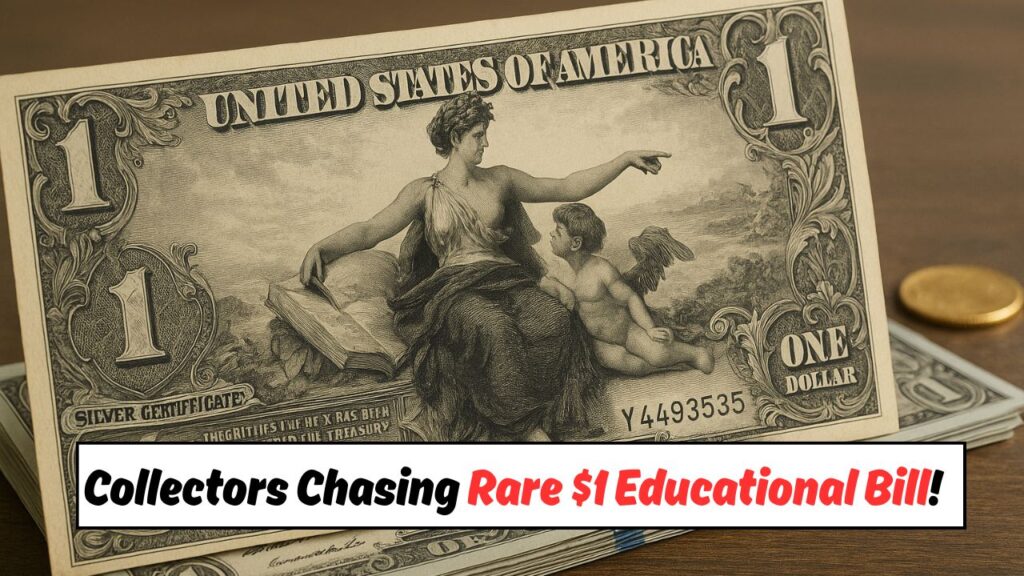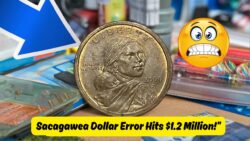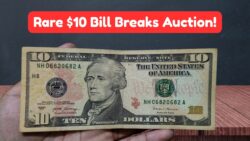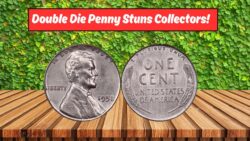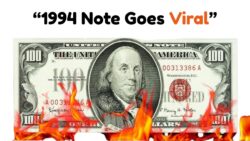1896 $1 Educational Note – The 1896 $1 Educational Note is more than just a piece of currency—it’s a stunning work of art, rich in symbolism, historical relevance, and now, soaring collector value. Often hailed as one of the most beautiful banknotes ever printed in U.S. history, this note has become a centerpiece for serious currency collectors across the globe. In recent auctions, well-preserved versions of this note have been selling for over $10,000, with rare uncirculated pieces reaching even higher. Let’s dive into the fascinating background, design elements, market value, and what makes this note a true collector’s dream.
The Historical Significance of the 1896 $1 Educational Note
Issued during the late 19th century, the 1896 $1 Silver Certificate was part of a trio of notes known as the “Educational Series” which included denominations of $1, $2, and $5. These notes marked a shift toward allegorical and classical imagery that aimed to reflect the nation’s ideals of knowledge, power, and progress.
- First introduced by the U.S. Treasury in 1896.
- Part of the Silver Certificate series, meaning it could be redeemed for one silver dollar.
- Represented a shift from utilitarian banknotes to highly artistic designs.
- Discontinued after 1899 and replaced with more conservative designs.
This was more than just a note; it was a visual expression of the nation’s pride in its intellectual and cultural achievements.
Design and Symbolism: A Masterpiece in Currency Form
The design of the 1896 $1 Educational Note was revolutionary. It featured detailed allegorical imagery never seen before on U.S. currency.
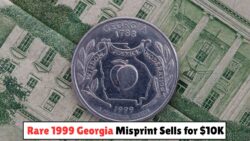 This 1999 Georgia Quarter With Misprint Just Hit $10,000 at Auction – Still in Circulation!
This 1999 Georgia Quarter With Misprint Just Hit $10,000 at Auction – Still in Circulation!
Front Design (Obverse):
- The main scene is titled “History Instructing Youth”.
- A female allegorical figure (representing History) points toward the Washington D.C. landmarks in the background.
- She instructs a young boy who represents the future and learning.
- The artwork was created by Will H. Low, an acclaimed artist of the time.
Back Design (Reverse):
- Features portraits of George and Martha Washington, adding patriotic value.
- Highly detailed ornamental patterns and classical architectural elements.
The use of neoclassical themes and symbolic figures made the note a bold statement about America’s intellectual and political maturity.
Current Market Value and Auction Highlights
Over time, the 1896 $1 Educational Note has become one of the most sought-after U.S. currency items. Its value varies depending on condition, rarity, and historical annotations.
Here is a breakdown of recent sales and current market prices:
| Condition | Estimated Value (USD) | Notes |
|---|---|---|
| Poor / Damaged | $250 – $800 | Still collected for design/history |
| Fine (F12-F15) | $1,000 – $2,500 | Visible wear, but all features intact |
| Very Fine (VF20+) | $2,500 – $5,000 | Good centering and less fold marks |
| Extremely Fine (EF40+) | $5,000 – $10,000 | Very minimal wear, nearly crisp |
| Uncirculated (AU+ or GEM) | $10,000 – $25,000+ | Top condition, auction-worthy |
Some rare notes with special serial numbers or signatures can even exceed $30,000 at major currency auctions.
Why Collectors Are Willing to Pay Big
There are multiple reasons why collectors and investors are ready to pay five-figure prices for this note:
Scarcity
- These notes were only printed for a short period (1896–1899).
- Most were redeemed and destroyed, making surviving pieces limited.
Artistic Value
- Unlike any other note, this is often described as “fine art on currency.”
- The engraving detail rivals even classic Renaissance prints.
Historical Appeal
- Captures the optimism and ideals of post-Civil War America.
- It reflects a time of national rebuilding, progress, and industrial expansion.
Investment Potential
- Prices have steadily risen over the past few decades.
- Increasing demand as younger collectors enter the market.
Tips for Buying or Selling an 1896 Educational Note
If you’re interested in owning or investing in this historic piece, consider the following:
1. Verify Authenticity
- Ensure the note is certified by reputable grading services like PMG or PCGS Currency.
- Counterfeits and replicas do exist.
2. Check Serial Numbers
- Low serial numbers (e.g., below 100) or unique patterns increase value.
- Star notes or signature combinations may also carry premiums.
3. Inspect the Condition
- Centering, edge tears, stains, and folds all impact value.
- Buy the best grade you can afford.
4. Store Properly
- Keep in a currency sleeve, in a dry, low-light area.
- Avoid touching the note with bare hands to preserve integrity.
5. Auction vs Private Sale
- Auctions can bring higher prices, especially for rare grades.
- Private sales may offer bargains but require extra caution.
Where to Find the 1896 $1 Educational Note Today
Several platforms and auction houses are known for trading in such high-value currency:
| Platform | Specialty |
|---|---|
| Heritage Auctions | Frequent U.S. Currency sales |
| Stack’s Bowers | Historical notes and rare finds |
| eBay | Mixed listings (buyer must verify) |
| GreatCollections | Certified-only sales |
| Private dealers | Niche market with negotiation room |
Always verify the reputation and return policy of the seller before making a high-ticket purchase.
The 1896 $1 Educational Note stands as a stunning reminder of a time when U.S. currency was both functional and artistically aspirational. With auction prices now surpassing $10,000 for high-grade pieces, it’s a note that combines aesthetics, history, and investment appeal in one spectacular collectible. Whether you’re a seasoned numismatist or a curious beginner, this note is a shining example of why currency collecting remains such a rewarding passion.
FAQs About the 1896 $1 Educational Note
Q1. Why is the 1896 $1 Educational Note so valuable?
Because of its beautiful design, rarity, historical significance, and high demand among collectors.
Q2. What is depicted on the front of the note?
The front features “History Instructing Youth,” an allegorical image symbolizing education and progress.
Q3. How many of these notes still exist today?
Estimates suggest only a few thousand authentic notes survive in collectible condition.
Q4. Is it safe to buy these notes online?
Yes, if bought from certified dealers or auction platforms with proper grading and return policies.
Q5. Can I still redeem the note for silver?
No, silver redemption ended long ago. The note now holds collectible and historical value only.

